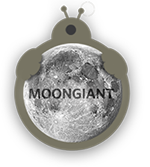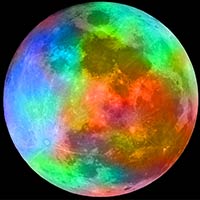
 August 13 Waxing Gibbous 77% |
 August 14 Waxing Gibbous 85% |
 Waxing Gibbous Illumination: 91% |
 August 16 Waxing Gibbous 96% |
 August 17 Waxing Gibbous 99% |
Moon Phase: August 15, 2016
On this day the Moon was in a Waxing Gibbous phase. Visible through most of the night sky setting a few hours before sunrise. This phase is when the moon is more than 50% illuminated but not yet a Full Moon. The phase lasts about 7 days with the moon becoming more illuminated each day until the Full Moon.
During a Waxing Gibbous the moon rises in the east in mid-afternoon and is high in the eastern sky at sunset. The word Gibbous first appeared in the 14th century and has its roots in the Latin word "gibbosus" meaning humpbacked.
Visit the August 2016 Moon Phases Calendar to see all the daily moon phase for this month.
Waxing Gibbous Phase
The Waxing Gibbous on August 15 has an illumination of 91%. This is the percentage of the Moon illuminated by the Sun. The illumination is constantly changing and can vary up to 10% a day. On August 15 the Moon is 11.95 days old. This refers to how many days it has been since the last New Moon. It takes 29.53 days for the Moon to orbit the Earth and go through the lunar cycle of all 8 Moon phases.
Today's Moon Sign: ♋ Cancer
The current zodiac moon sign is Cancer, positioned at 23.19° within the sign. The Moon entered Cancer on Loading... and will shift into Leo on Loading.... The zodiac moon sign represents the position of the Moon as it moves through the twelve signs of the zodiac. Each zodiac moon sign lasts about 2 to 2.5 days as the Moon travels through that part of the sky.
The 8 Lunar Phases
There are 8 lunar phases the Moon goes through in its 29.53 days lunar cycle. The 4 major Moon phases are Full Moon, New Moon, First Quarter and Last Quarter. Between these major phases, there are 4 minor ones: the Waxing Crescent, Waxing Gibbous, Waning Gibbous and Waning Crescent. For more info on the Moon Cycle and on each phase check out Wikipedia Lunar Phase page.
Phase Details for - August 15
Illumination: 91%
Moon Age: 11.95 days
Moon Angle: 0.51
Moon Distance: 390,605.80 km
Sun Angle: 0.53
Sun Distance: 151,478,358.03 km
Useful Moon Resources
Check the weather before a night of Moon gazing at weather.com
For a list of all the current meteor showers visit American Meteor Society
Waxing Gibbous Moonrise and Moonset


